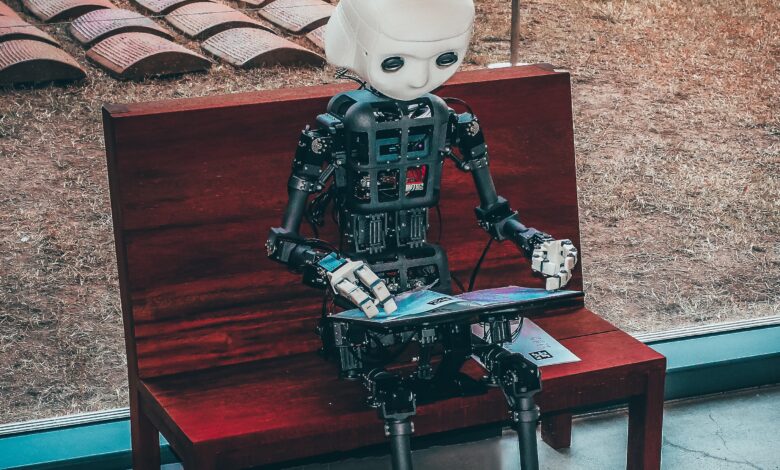The Role of Machine Learning in Prediction

Machine learning is changing how we think about predictions. It is a branch of artificial intelligence (AI) that teaches computers to learn from data. With machine learning, computers can identify patterns and make predictions without being explicitly programmed. This ability has various applications across many fields.
What is Machine Learning?
Machine learning involves algorithms that analyze data and learn from it. These algorithms can improve their performance over time as they process more data. There are three main types of machine learning: supervised, unsupervised, and reinforcement learning.
- Supervised Learning: In supervised learning, the algorithm is trained on a labeled dataset. This means that the input data has corresponding output labels. For example, if we want to predict house prices, the dataset contains features like size, location, and number of bedrooms, along with the actual prices. The algorithm learns to associate these features with the prices.
- Unsupervised Learning: Unlike supervised learning, unsupervised learning works with unlabeled data. The algorithm tries to find patterns and structures in the data without guidance. It can group similar data points or identify anomalies. This type of learning is useful for market segmentation or customer clustering.
- Reinforcement Learning: Reinforcement learning involves an agent that learns by taking actions in an environment. It receives feedback in the form of rewards or penalties. Over time, the agent learns to choose actions that maximize its rewards. This approach is often used in robotics and game-playing scenarios.
How Does Machine Learning Make Predictions?
Machine learning makes predictions by analyzing past data to forecast future outcomes. Here’s how it works:
- Data Collection: The first step is to gather data. This data can come from various sources, such as sensors, transactions, or user interactions. The more relevant data we have, the better the predictions will be.
- Data Preprocessing: After collecting data, it needs to be cleaned and organized. This process involves removing duplicates, handling missing values, and transforming data into a suitable format for analysis.
- Model Training: Next, a machine learning model is selected. This model is trained using the cleaned dataset. During training, the model learns to identify relationships between input features and output labels.
- Model Evaluation: Once the model is trained, it is tested on a separate dataset to evaluate its performance. Common evaluation metrics include accuracy, precision, recall, and F1 score. If the model performs well, it can be used for predictions.
- Prediction: Finally, the trained model can make predictions on new, unseen data. For example, we could use it to predict the likelihood of a customer purchasing a product based on their previous behavior.
Applications of Machine Learning in Prediction
Machine learning can make predictions across various domains. Let’s look at some notable applications.
1. Healthcare
In healthcare, machine learning can predict patient outcomes. For instance, algorithms can analyze medical histories and symptoms to forecast disease progression. This helps doctors make informed decisions about treatments. Machine learning models can also help identify patients at risk for conditions like diabetes or heart disease early.
2. Finance
The finance industry relies on machine learning for credit scoring and fraud detection. Algorithms can analyze transaction patterns to identify suspicious activities. They can predict the likelihood of loan defaults based on a borrower’s credit history and financial behavior. This increases efficiency and reduces losses.
3. Retail
Retailers use machine learning to improve customer experience. Predictive analytics can forecast inventory needs based on past sales data. Retailers can analyze customer preferences to recommend products. This personalized approach increases sales and customer satisfaction.
4. Transportation
In transportation, machine learning plays a role in route optimization and predictive maintenance. Ride-sharing companies use algorithms to predict demand for rides in specific areas and times. Airlines use machine learning to forecast flight delays by analyzing weather patterns and historical data.
5. Weather Forecasting
Weather forecasting has greatly improved with machine learning. Algorithms analyze vast amounts of weather data to predict conditions. They can more accurately forecast temperatures, rainfall, and severe weather events, helping communities prepare for emergencies.
Challenges of Machine Learning Predictions
Despite its potential, machine learning isn’t without challenges. Here are a few:
- Data Quality: The accuracy of predictions greatly depends on the quality of data. Poor-quality data can lead to incorrect predictions. Cleaning and preprocessing data is critical.
- Overfitting: Sometimes, a model performs well on training data but poorly on new data. This is called overfitting. To avoid it, model complexity must be balanced.
- Interpretability: Many machine learning models operate as “black boxes,” meaning it is difficult to understand how they make decisions. This lack of transparency can be a problem in critical fields like healthcare.
- Ethical Considerations: Machine learning also raises ethical issues. Predictions based on biased data can lead to unfair outcomes. Addressing bias in algorithms is vital for fair applications.
Conclusion
Machine learning significantly impacts how we make predictions. Its ability to analyze vast datasets and identify patterns helps various fields like healthcare, finance, and retail. While it offers many benefits, challenges remain. Continuous research and development are essential to improve machine learning approaches and address these challenges. As technology advances, the potential for machine learning in prediction will only grow.




